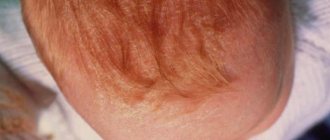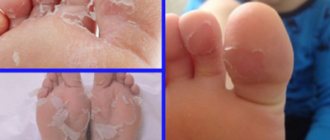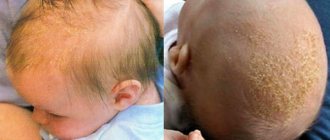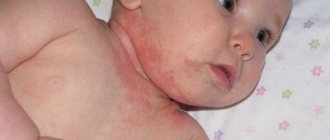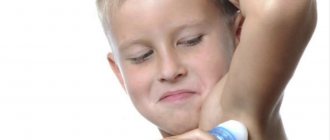Are cracks in a child’s fingers dangerous?
Almost all children at least once in their lives experience dry fingers or palms and the appearance of minor injuries on the skin of their hands. In most cases, such microtraumas are not dangerous and heal on their own. However, if they do not go away for a long time, are accompanied by pain and itching, this problem cannot be ignored. Cracking of the skin on the hands may indicate the presence of serious diseases of the internal organs and body systems. Therefore, if you notice that your child’s fingertips, knuckles and palms are cracking, be sure to consult a doctor.
Fungal diseases
The baby is very inquisitive and tries to check everything by tooth and touch. A mother may simply not be able to watch in time when her child pets someone else’s kitten or dog. But you never know what can fall into the zone of interest of a child who is actively exploring the world around him? Here's a fungus for you! After all, it is transmitted through touch. And if an adult body can independently fight possible infections, then the baby’s immunity is still very imperfect.
You should not treat the fungus yourself, only according to prescriptions from a dermatologist!
Cracks on a child's fingers: causes and treatment
Any violation of the integrity of the skin that appears in children causes concern among parents. Therefore, as soon as mothers and fathers notice the appearance of this problem, they ask the question: “Why do the child’s fingers crack?” Only a doctor can answer this question competently, so first of all it is recommended to consult a pediatrician or dermatologist.
The occurrence of such damage can be caused by external and internal preconditions.
- Mechanical impact, friction. If there is constant pressure or friction on a child's palms and fingers, the integrity of the skin may be compromised.
- Temperature effect. If a child has cracked fingers in winter after spending a long time outside without gloves, this may be the result of exposure to low temperatures.
- Insufficient air humidity. With the start of the heating season, many people complain of increased dry skin. Therefore, if the air in the room where the child is is too dry, this can lead to the formation of microcracks in the hands.
- Reaction to contact with soap, household chemicals, chlorinated water, etc. Aggressive components of hygiene products and chlorinated tap water can dry out the skin. As a result, it cracks, causing pain and discomfort to the child.
Internal factors that cause cracks in a child’s hands include the following:
- Dermatological diseases. Dry eczema, psoriasis, contact and allergic dermatitis - all these diseases can manifest as dry and cracking skin on the hands.
- Fungal skin lesions. Fungi are often localized on the fingers and toes. If, in addition to the formation of skin cracks on the fingers, the lesion also affects the nails, this may be a sign of onychomycosis, a fungal disease caused by the fungi Trichophyton rubrum.
- Infectious diseases. One of the signs of scarlet fever is peeling of the skin on the palms and soles with the formation of cracks on it.
- Hypovitaminosis. A lack of certain vitamins (A, B1, C, P) in the body causes the skin to dry, peel and crack. In some cases (for example, with vitamin PP hypovitaminosis), the skin may not only crack, but also peel off in layers.
- Anemia. Metabolic disorders characteristic of anemia (anemia) often lead to impaired oxygen supply to the skin. As a result, the child's fingertips crack.
- Hypothyroidism. In most cases, hypothyroidism occurs not in children, but in adults, but sometimes it can develop in childhood. Its symptoms include, among other things, dry skin on the heels and palms, cracking, and brittle nails.
- Diabetes. Diabetes mellitus is often accompanied by skin lesions on the palms and heels: it becomes dry, rough, its turgor decreases, and deep cracks appear.
- Scleroderma. When a child develops systemic scleroderma (an autoimmune connective tissue disorder), the skin on the fingers may become thick, dry, and cracking.
- Raynaud's disease. It is a phenomenon of a three-phase change in the color of the skin of the fingers and toes, and in some cases also the tip of the nose, lips, tip of the tongue, and auricle. At the beginning of the attack, whitening of the skin appears, accompanied by coldness and a feeling of numbness. This phase is replaced by a phase of cyanosis - blue discoloration of the skin. At the end of the attack, redness appears with a feeling of heat, “crawling goosebumps,” and pain. The disease mainly affects adults, but in rare cases it can also be diagnosed in children. The disease is manifested by excessive dryness of the skin on the hands and feet, the appearance of hangnails near the nails, and the formation of ulcers and cracks.
- Reaction to stress. Severe emotional shock can lead to disruption of the hydrolipid balance of the skin, its dryness and cracking.
Treatment of cracks on the fingers of a child should be carried out under the supervision of a specialist. The doctor will prescribe appropriate therapy depending on the root cause of the problem. Usually, to speed up recovery, it is recommended to use moisturizing and nourishing creams and ointments that normalize the hydrolipid balance of the skin, eliminating dryness and flaking. If the problem is caused by a fungal infection, antimycotics (antifungal drugs for external use) are prescribed. If skin cracking is accompanied by severe itching, antihistamines may be recommended. Also, to achieve a positive result, it is important to eat a balanced diet and, if necessary, take vitamin and mineral complexes. It is important to protect the skin of your hands from aggressive substances contained in household chemicals and hygiene products, as well as limit contact with chlorinated water.
Experts' opinion
According to the results of clinical studies conducted by the Union of Pediatricians of Russia, it was proven that when using a complex of TM LA-KRI products, the level of skin moisture decreased by 4% in comparison, and in the group that used placebo, the level of moisture decreased by 9%.
The conducted clinical study proves the high efficiency, safety and tolerability of products for daily skin care of children with mild and moderate forms of atopic dermatitis and during remission, accompanied by a decrease in the quality of life of patients. As a result of therapy, a decrease in the activity of the inflammatory process, a decrease in dryness, itching and flaking was noted.
It has been proven that La Cree cream for dry skin:
- eliminates dryness and flaking;
- retains the skin's own moisture;
- protects skin from wind and cold.
Consumer Reviews
korobok77 (otzovik.com)
“The skin of my hands always suffers in winter. Every year this is such a problem for me, Mom, don’t worry. I think that many women will understand me. The skin deteriorates, becomes dry, and cracks for many reasons:
- cold, frosty weather outside, we don’t wear gloves 100% of the time when walking;
- dry air in apartments due to heating;
- regularly keeping your hands in water, washing dishes, washing, cleaning, all this also dries the skin of your hands;
- exposure to household chemicals if we forget to wear rubber gloves.
You need to constantly smear your hands with cream, and ideally do hand masks and paraffin therapy procedures. But it just so happened that this winter I gave up. A small child and caring for him take up all my time, and you often forget about yourself.
After walking for a couple of days without gloves, my skin became dry. And then I cleaned the kitchen using a strong chemical, but there were no gloves at home. And this is what I ended up getting on my right hand - cracks, abrasions, wounds and even blood.
Closer photo of the knuckles. Horror. It doesn't just look unattractive in appearance, it feels painful.
Moreover, I want to say that these photos were taken after two or three days of constant use of different hand creams. They didn't help me at all. And I remembered that I have products from the Vertex brand of the “La-Cri” series - cleansing gel, emulsion and cream.
I received all these samples as a gift when I was in the maternity hospital while pregnant. We were given samples as advertising. After all, all these products can be used to care for the skin of a newborn baby...
. The cream itself has a normal consistency, but an unusual light brownish color. La Cree cream is quite light, not particularly greasy, and spreads well and evenly over the skin. You just need to rub it into the skin with massaging movements for a minute, and the cream is perfectly absorbed. There is a slight film left on the skin, I think this is noticeable in the photo. The film does not remain for long; it evaporates after a while. I am not at all bothered by her presence after applying the cream.
La Cree cream has a bright scent, it seems to me that it smells like a mixture of licorice and coffee. I think the scent is not for everyone. I personally like the smell, but it doesn't last long.
Indications for use of La-Cri Cream are skin conditions that are accompanied by itching, dryness and inflammation. This could be diaper rash, the consequences of sun and thermal burns and burns from plants, insect bites, and simply dry skin, for example, age-related...
...For three days after that terrible photo with a bright manicure and cracks on my right hand, I used La Cree products: I washed my hands with Cleansing Gel, smeared them with Emulsion and Cream. This is a photo of the right hand after 3 days of treatment. Much better already...
1. La-Cri products are wonderful, effective, but expensive.
2. I will buy Gel and Emulsion for special cases of treating any problems similar to those described in this review. I can't afford these products for daily use.
3. I will definitely buy La-Cri cream! It is economically used, not particularly expensive, effective, and copes with many skin problems of adults and, most importantly, children. And we have summer ahead, sores, dachas and mosquitoes. I will definitely recommend La-Cri Cream!
A child has cracked skin on his fingers: is this dangerous?
If the cracks are small and shallow, they are not dangerous in themselves. However, they violate one of the main functions of the skin - protective. Therefore, if an infection gets into them, an inflammatory process may develop, followed by suppuration. This means that even the smallest areas of chapped skin cannot be left unattended. It is necessary to find out the reason for their appearance and begin appropriate treatment.
In addition to the possible penetration of infection, cracks in a child’s hands are dangerous for another reason. They hurt and cause discomfort; it may be difficult for the baby to bend his fingers and touch anything. They can also interfere with a child’s social adaptation, causing him psychological discomfort when communicating with peers, at school or in kindergarten.
Experts say that dry skin on the hands, especially between the fingers, is a fairly common problem that 2/3 of children and adults, especially women, have encountered at least once in their lives. There are many medications and cosmetics to solve the problem, but the main thing is to find out why this disorder occurred. The reasons can be very different.
Stress
Not only adults, but also very young children are susceptible to stress! Children also have their own experiences, and quite strong ones. It's sad to see how parents punish their little one and can even beat them! But remember that any tears in a child are extremely stressful. which undermines the not yet strengthened immunity. Try not to expose your child to additional worries due to punishment, he already has enough troubles in this life!
Every day the baby is exposed to a whole range of stresses.
What kind of trouble can a small child have if his mother and grandmother take care of him day and night? Not getting what you want is already a nuisance! This may seem funny to an adult, but a child may be very nervous because he was not given a toy and, moreover, was spanked on the bottom! Instead of punishing, try to simply switch the child’s attention from the object of desire to another object, so as not to expose him to unnecessary stress. Be merciful to the little person's wants and needs.
Why does the skin on your fingers dry out?
If your hands look rough, dry, cracked, the reasons may be:
- Lack of vitamins in the daily diet, especially vitamins A and E;
- Increased blood sugar levels;
- Frequent contact with aggressive chemicals;
- Prolonged exposure of the skin to ultraviolet rays, wind, rain or snow;
- Low air humidity in a city apartment, especially during periods of intensive operation of central heating batteries;
- Using cosmetics that do not match your skin type.
Some dermatological diseases may also be the cause: lichen, eczema, psoriasis. The skin often becomes dry due to allergies, a condition called “allergic dermatitis” or, more colloquially, “diathesis”. This happens especially often in children whose immune systems have not yet fully developed. Also, dry skin often occurs in women during menopause and in old age due to hormonal changes in the body.
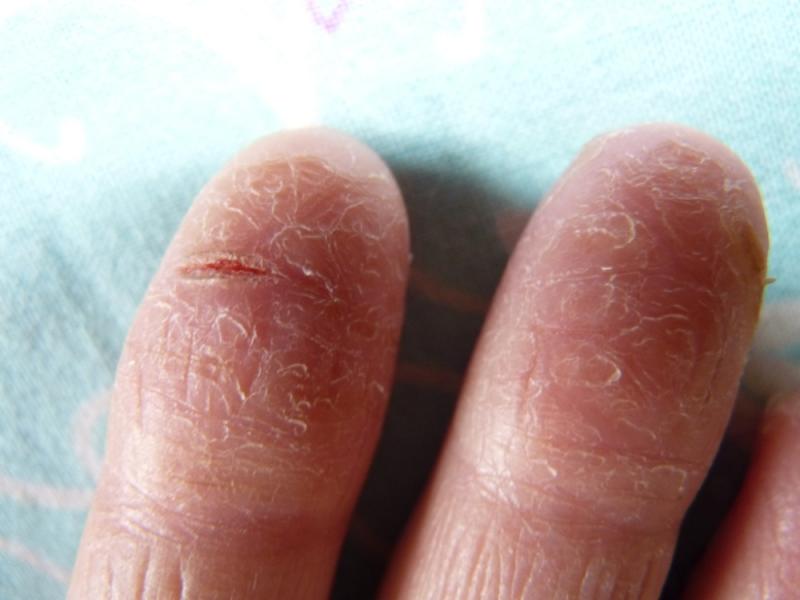
Dry skin on fingers
Dysbacteriosis
And what is it? Dysbacteriosis almost always occurs after a course of antibiotic treatment, and in adults too. Antibiotics do not understand the bad and good bacteria that populate the intestinal microflora: they destroy all bacteria in a row. Therefore, after a course of treatment, a digestive failure occurs, and this may result in the skin on the fingers starting to peel off. Dysbacteriosis is eliminated by taking beneficial bacteria. which may be prescribed by the attending physician. And to prevent dysbacteriosis, children should be given bifidoproducts, and it is also useful to take them themselves.

Some medications can deprive a child's body of beneficial bacteria.
Signs
You can conclude that your skin is dry by the following signs:
- To the touch, the skin has become rough, rough and resembles sandpaper;
- There is a constant feeling of skin tightness, this sensation causes great discomfort;
- Small wrinkles and cracks appear on the hands and around the nails;
- There is severe drying of the cuticle;
- Burrs often appear at the edge of the nail;
- The skin takes on an unhealthy color. They may be too pale, yellowish or red.
Also, one of the main signs of increased dryness is a tendency to frequent inflammation and irritation.
Causes of dry skin on hands
On a note. The fight against dry skin depends on what causes the problem: internal or external.
Internal causes are hormonal imbalances and general diseases, external causes are associated with environmental influences and the use of inappropriate cosmetics.
External
If dry skin around the fingernails is caused by external factors, the problem can be solved with the help of suitable cosmetics. Necessary:
- Use care products designed for dry and sensitive hands;
- Use a night cream with a soft texture daily;
- Massage your palms and fingers using massage oil;
- Do household chores and gardening work wearing protective gloves.
- When exposed to the sun, you should apply a sunscreen to your palms and fingers, including the areas near your nails.
Domestic
If the reasons lie within the body, it is necessary to reconsider the diet and enrich it with foods rich in vitamins A and E. These vitamins improve the ability of skin cells to retain water and prevent dehydration. It is also worth consulting with an endocrinologist, because the problem may be hormonal in nature.
Infection with worms
This is already a problem. Because infection with worms and roundworms must first be identified and then treated. This cannot be done without the intervention of doctors. analysis must be done. A baby can become infected with worms anywhere, even from the fur of pets. Therefore, do not rely on chance, but rather take preventive measures in advance.
Colic in a child is a problem for all parents. Colic always means sleepless nights, baby crying, tummy pain and stress. Despite the fact that the problem goes away on its own after 4 months, you should not endure the pain. We invite you to read our review of colic remedies for babies.
If your baby is diagnosed with dysbacteriosis, you cannot do without bifidumbacterin. Find a detailed description of the new generation probiotic here.
Oxolinic ointment is a truly effective remedy for colds or relics of the past. On this page www.o-my-baby.ru/zdorovie/lekarstva/oksolinovaya-maz.htm we will tell you what experts think about this.
Peeling around nails

Peeling around nails
Peeling around the nails usually occurs with frequent contact with household chemicals and vitamin deficiency. To solve the problem, you need to eat right, use protective gloves and regularly lubricate the cuticle with special oil. You should also temporarily avoid using nail polish, as it often contains harsh chemicals.
Treatment options
To get rid of the problem, you can use the following methods:
- Moisturizing night and day creams;
- Folk remedies according to “grandmother’s recipes”;
- Preparations for oral use and vitamins;
- Massage palms and fingertips using moisturizing massage oil.
Several methods can be used at once.
Folk
On a note. If you have dry skin around your fingernails, your grandmother’s advice will tell you what to do. The most effective folk remedy is a potato mask.
To do this you need to mix 4 tbsp. l. puree, 2 tbsp. l. preheated milk and tbsp. l. olive oil. The mixture should be thoroughly stirred and applied to cleansed skin of the hands and left for 20 minutes. A mask made from ground oatmeal flakes and tea leaves also works well. This mixture should be applied at night and gloves should be worn on your hands.
Medical
Of the products sold in pharmacies, the most effective are creams containing panthenol, a substance that quickly relieves dryness and inflammation. Bepanten cream and ointment are very popular. They can be used to soften the skin starting from newborn age. The drug does not cause allergies. The only negative is the rather high cost.
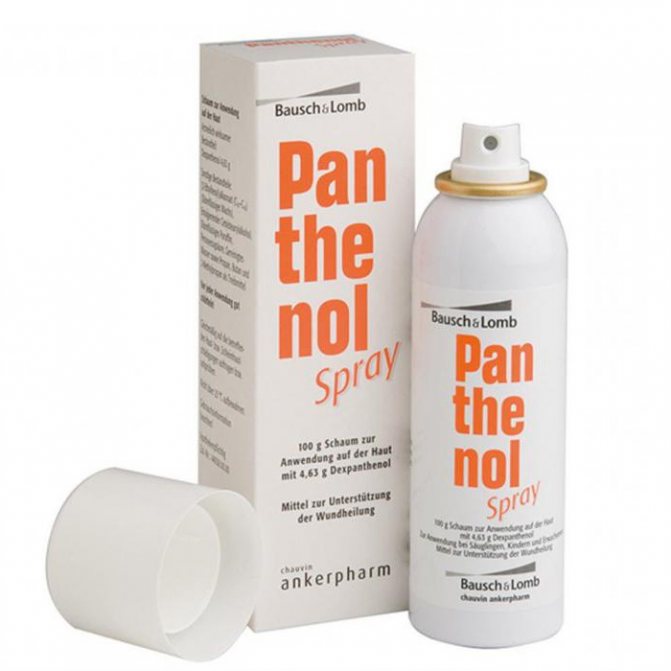
Cosmetic
Among cosmetic products, we can recommend creams for day and night hand care from Garnier and Nivea. The products contain a natural moisturizing factor and enhance the ability of the skin on the hands to retain water. The cosmetologist will tell you which cream to choose.
Our grandmothers' means
Folk remedies have been tested for centuries. Our great-grandmothers were treated by healers and sorcerers, and they knew very well the properties of various herbs and plants. But these methods are more suitable for prevention. Here are some recipes.
- A decoction of oatmeal will relieve and prevent peeling of the skin. Baths with strained broth are taken daily as long as there is a risk of skin peeling.

The amazing properties of oatmeal come in handy here too! - After water procedures, lubricate the skin with linseed and peach oil (in equal proportions). This applies not only to taking baths, but also to simply washing hands.
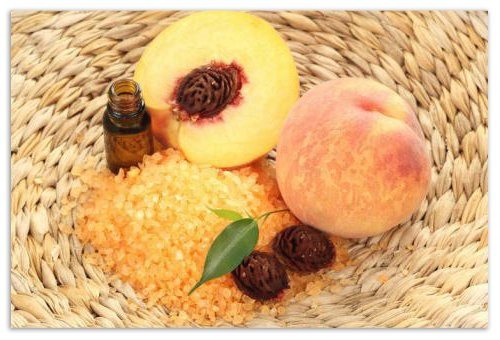
Children's hands can be lubricated with medicinal oil. - Generously lubricate the affected skin with wheat germ extract. This method has worked well, since wheat germ contains a lot of nutrients.
Preventing dry skin on hands
On a note. To keep your hands always soft, they need to be protected from the sun, frost and wind, as well as from contact with the ground. When working in the garden you only need to wear protective gloves.
It’s also worth giving your hands a rest from manicure from time to time. Starting from the age of 30, you should definitely use night cream to care for the skin of your palms and fingers, this will help prevent aging and roughening of the skin. Also, you should not wear rings made of nickel; this metal often causes allergies.
Usually, the problem of dry skin on the hands can be easily solved at home, if it is not caused by a serious skin disease. If the cause of dryness is a human illness, you should consult a professional dermatologist. He will prescribe products for external and internal use, and soon the skin condition will improve significantly. The main thing is to find out what causes the skin on your fingers to dry.
The skin of the hands is quite sensitive to external irritants (for example, detergents), as a result of which peeling of the fingertips occurs. They dry out, crack, and then peel off. In this condition, the epidermis becomes vulnerable to numerous infections. The causes of peeling and cracking of the skin on the fingers can be other factors, including various diseases of the body.
Ungroomed and unhealthy looking hands spoil the aesthetic beauty and cause discomfort. To restore health to your skin, you must first understand the causes of this problem.
- regular use of aggressive chemicals;
- weather conditions: dry and hot weather, temperature changes, wind, frost, etc.;
- frequent hand washing: water dries out the epidermis, washing away the protective layer of the skin;
- improper use of cosmetics: components can cause allergies and dry skin;
- Using expired skin care products.
Latex causes irritation and allergic reactions in some people. Such persons should avoid using gloves made of this material.
Certain construction professions can cause peeling in adults - cement, chalk, and other materials cause dryness and cracking of the skin on the hands. The epidermis suffers in artists, teachers, felting felters, etc.
Possible problems in the body:
- lack of vitamins E and A;
- dehydration;
- fungal and bacterial infections;
- hormonal disbalance;
- diabetes;
- pancreatic disease;
- keratosis is a skin disease in which the dermis becomes rough and rough;
- psoriasis;
- eczema;
- erythroderma - causes peeling of the skin on the fingertips;
- ichthyosis is a rare hereditary disease: the skin dries and becomes rough, acquiring a scaly structure;
- poor blood circulation;
- hereditary feature of the skin;
- intoxication.
A common problem with dry skin is severe and prolonged hypothermia. Wearing thin gloves does not protect delicate skin, the fat layer on the fingers decreases, and blood circulation worsens. As a result, the skin on the fingertips flakes, peels and cracks.
